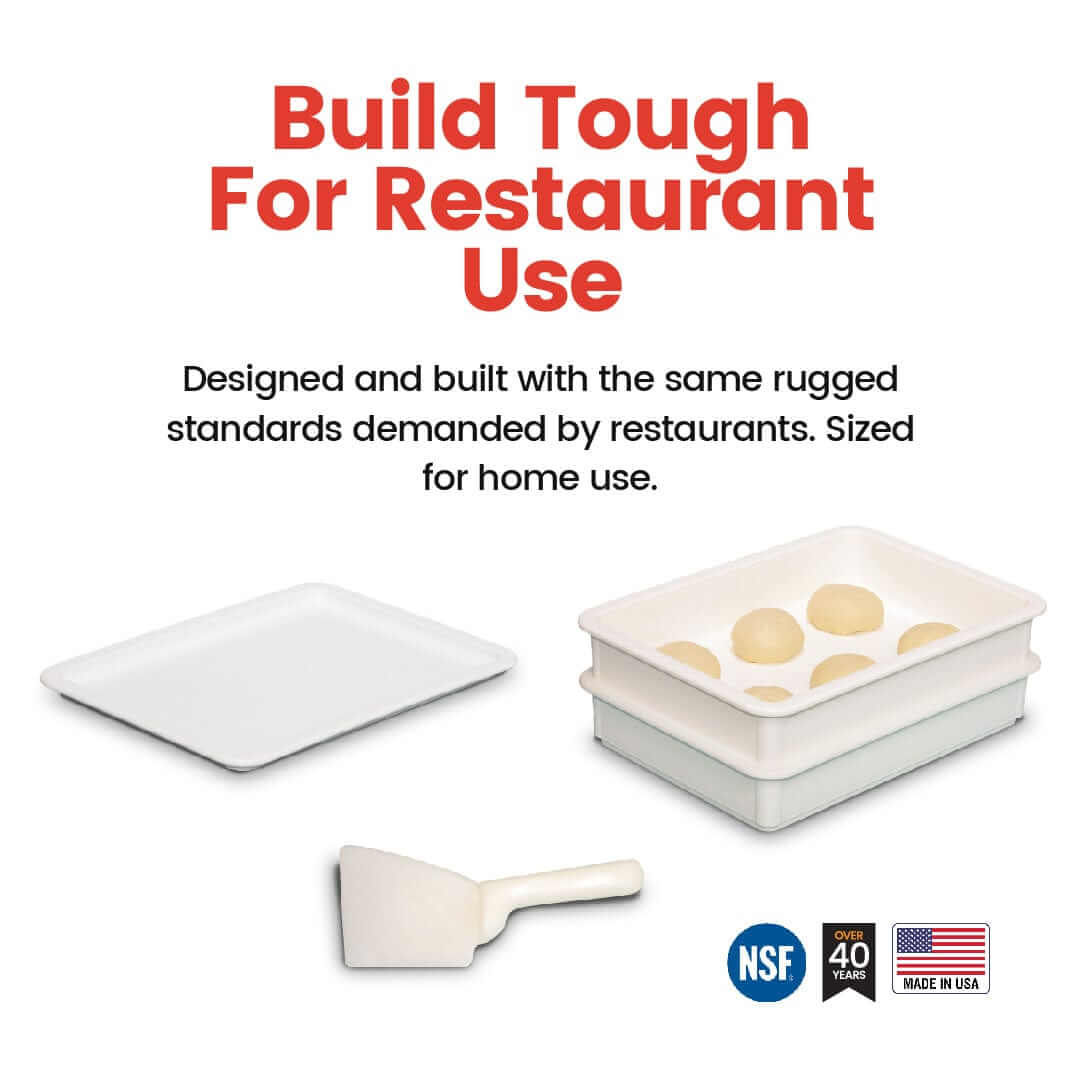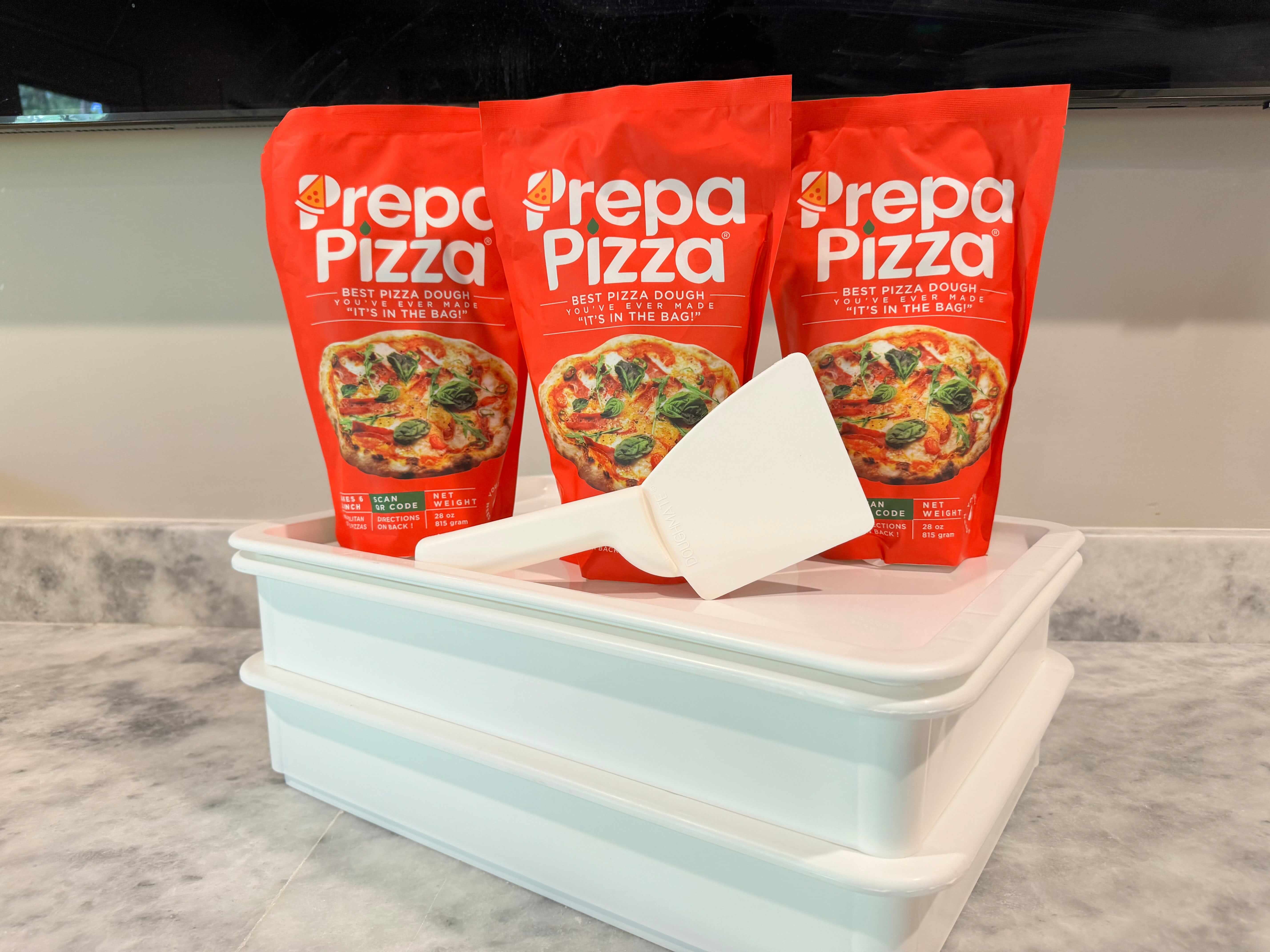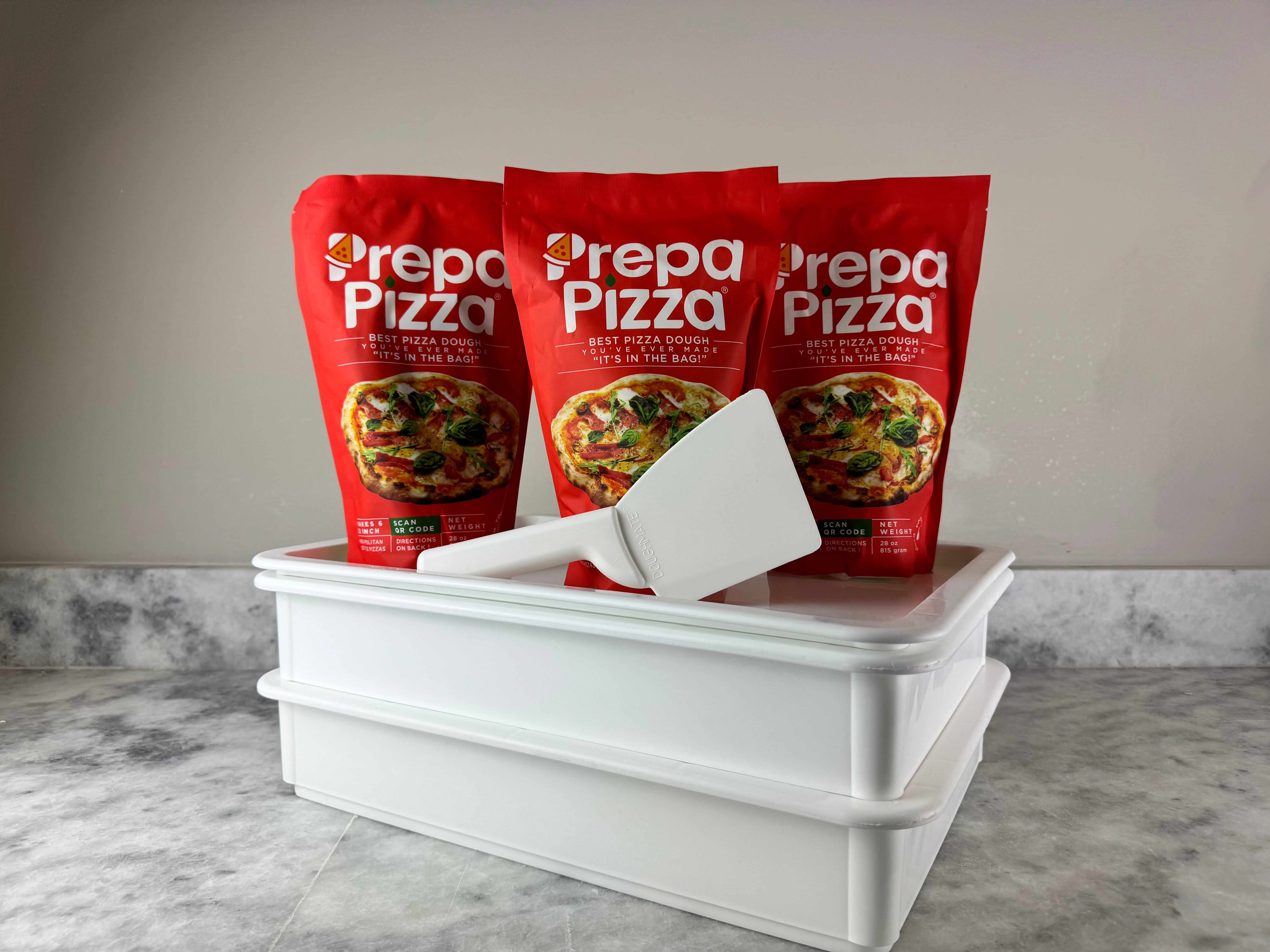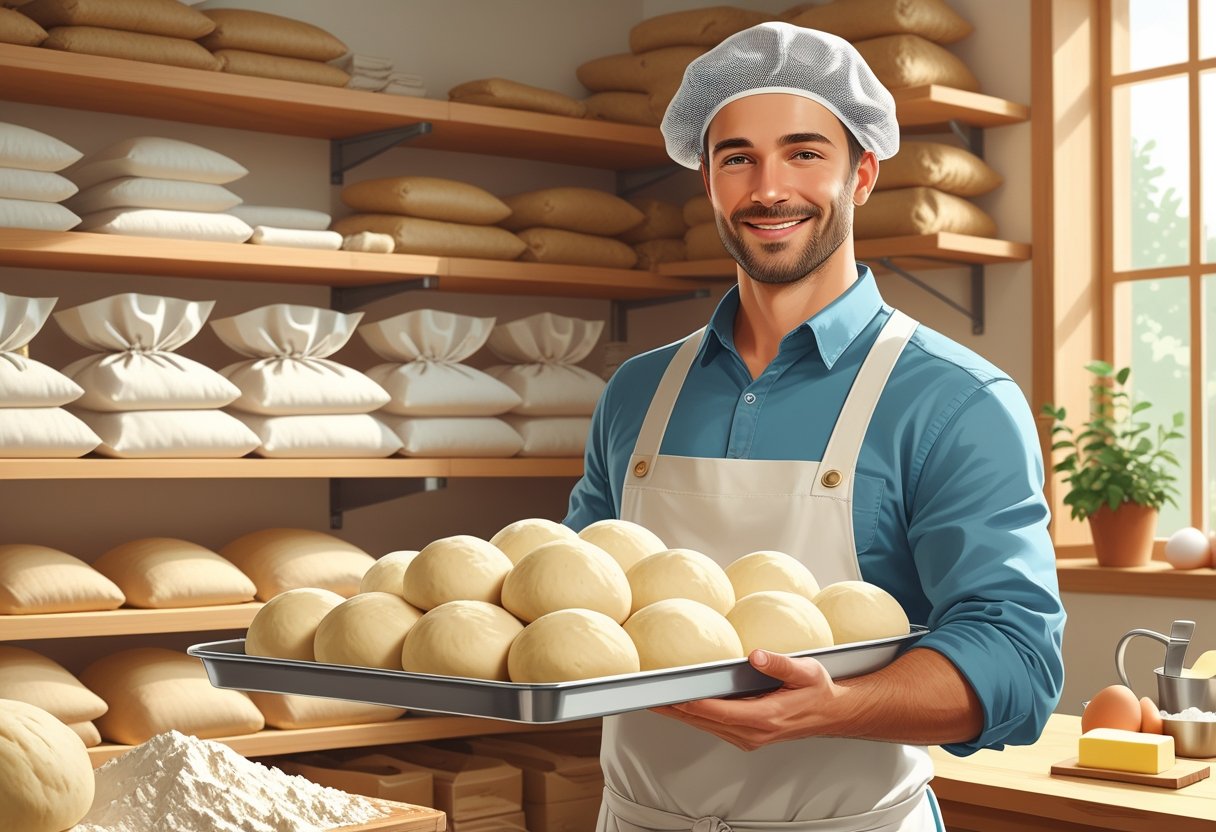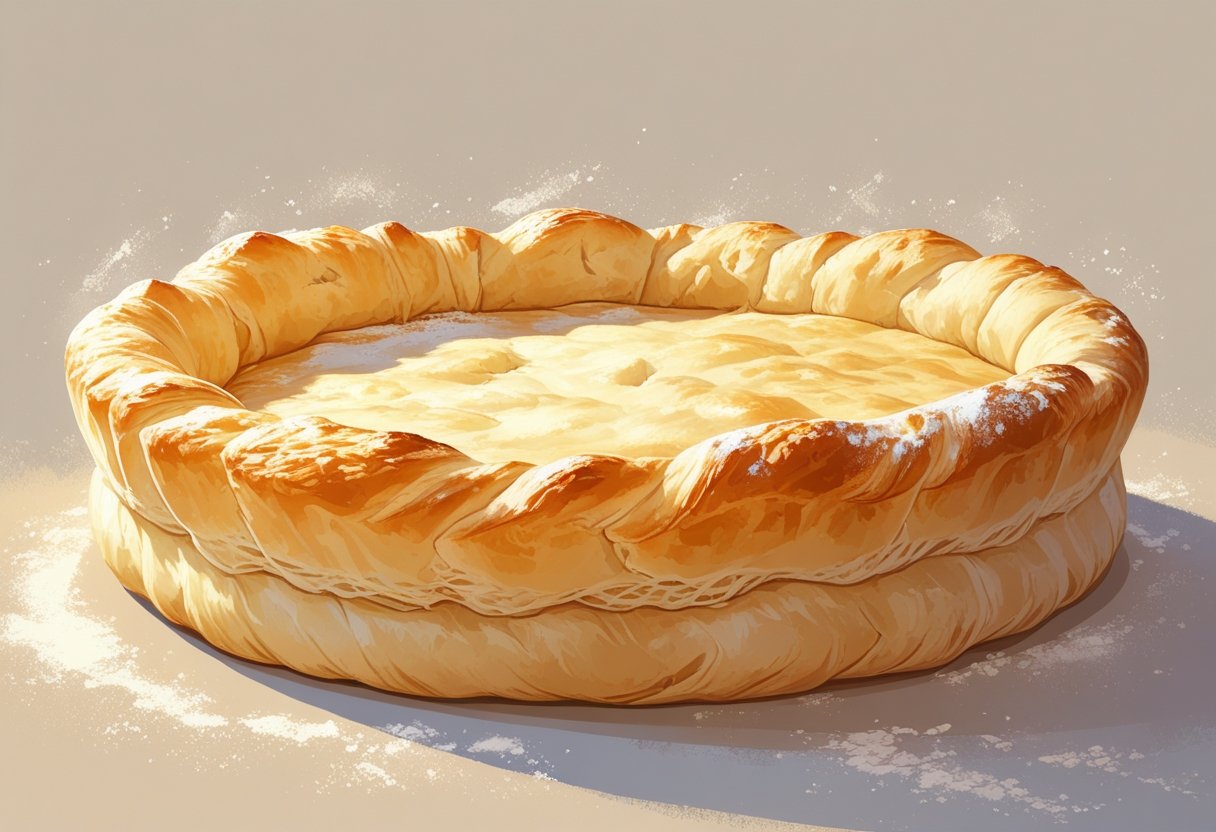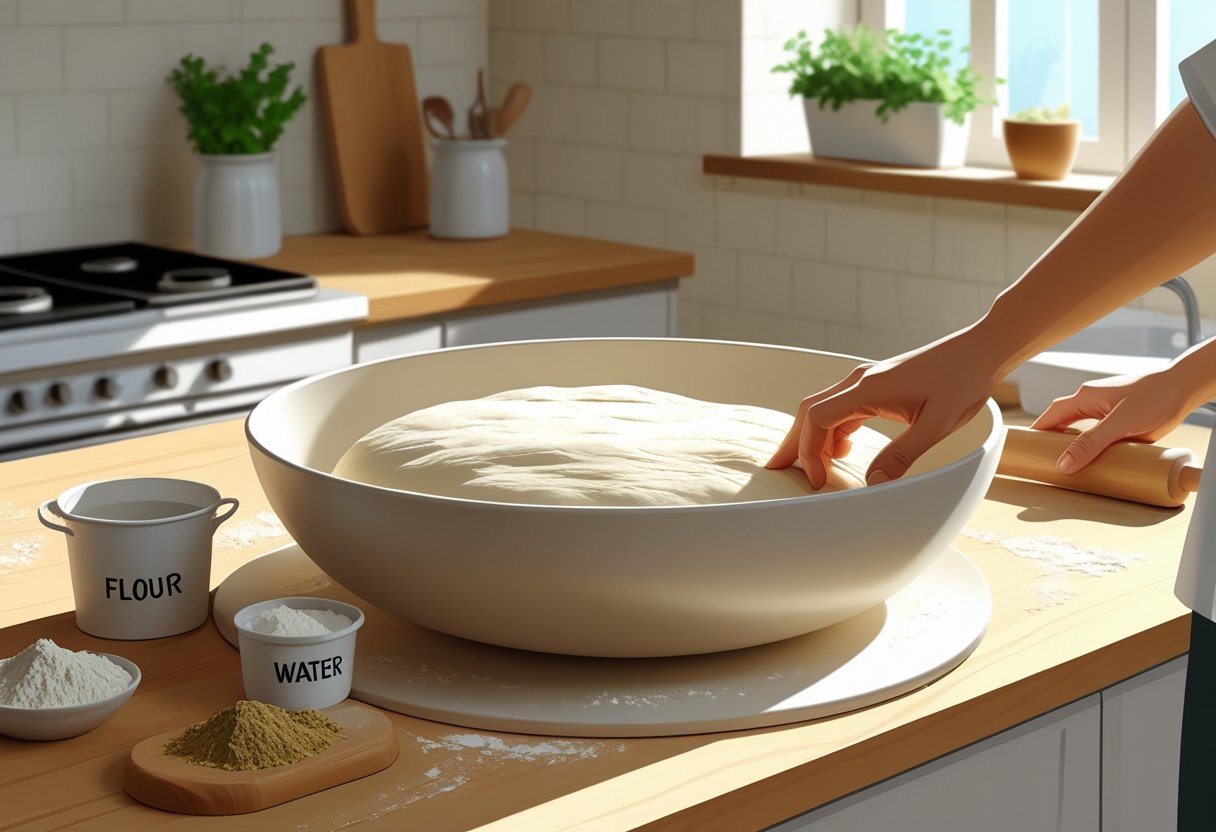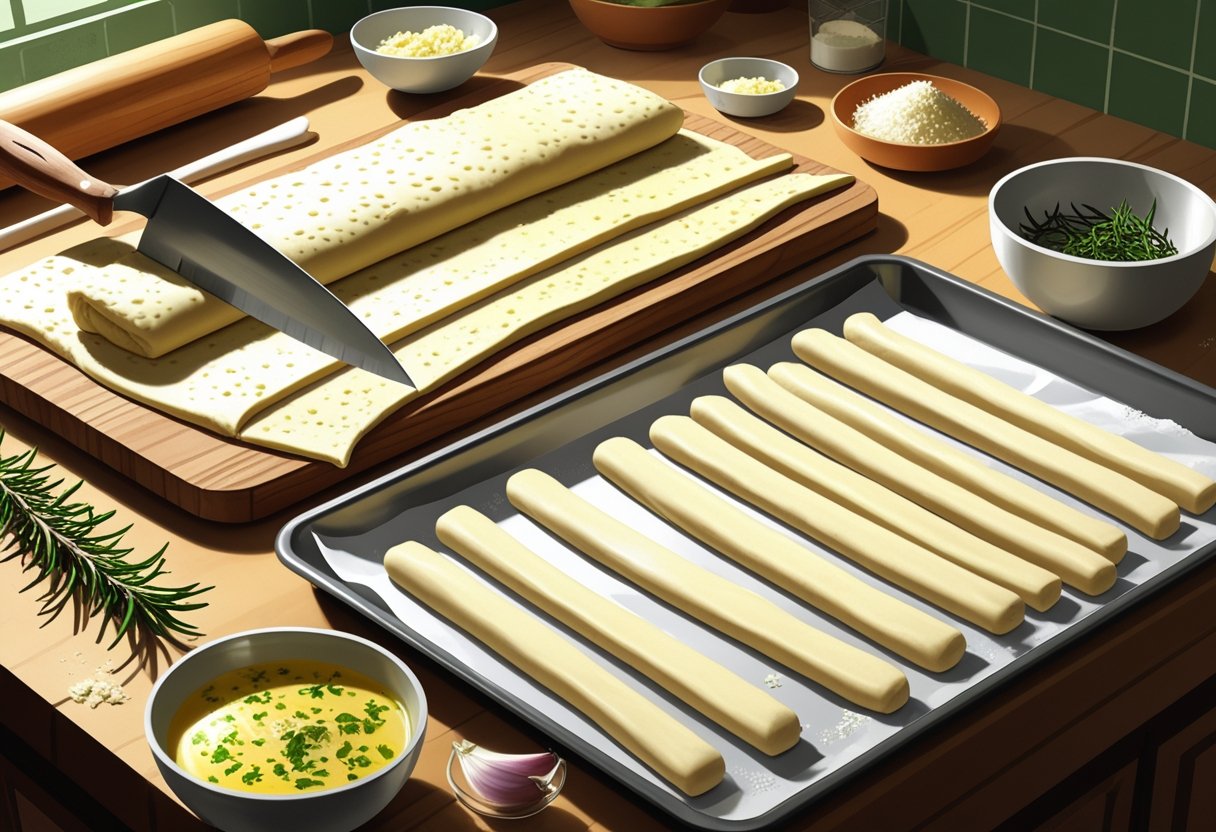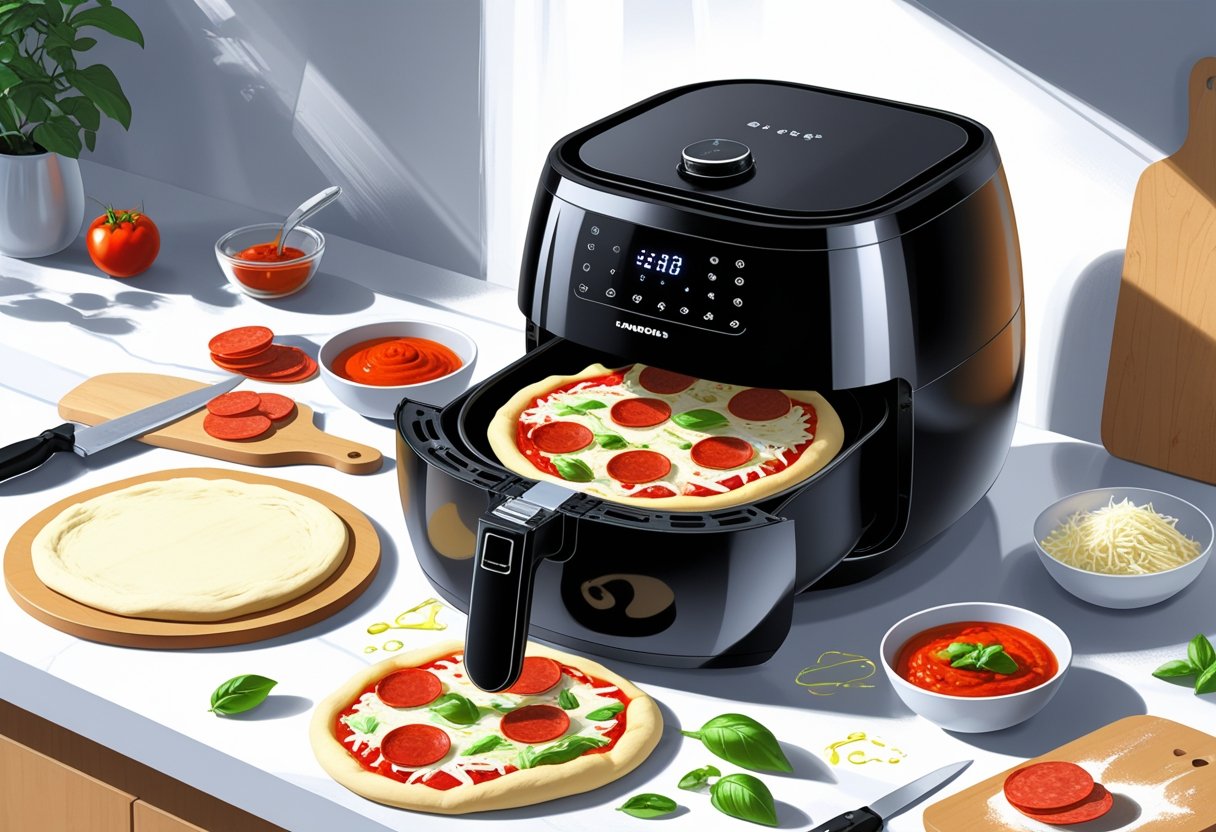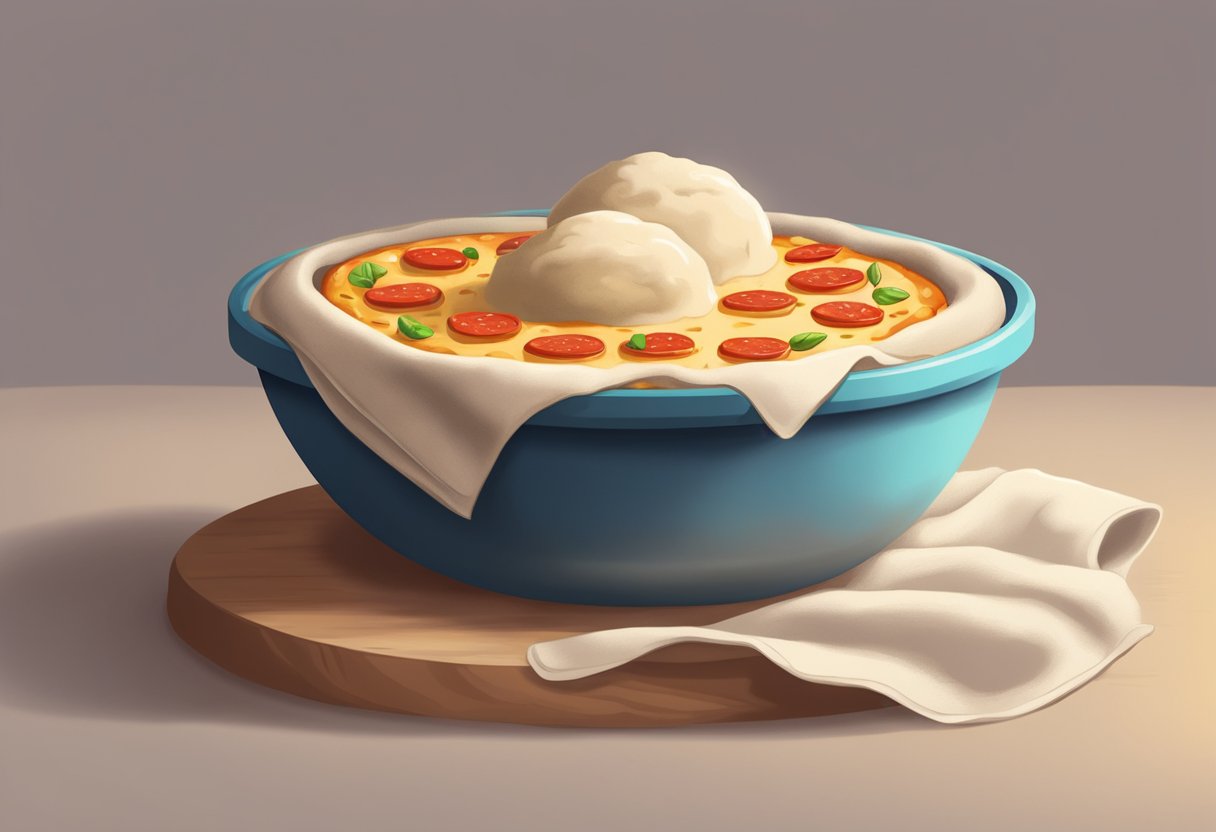
How Long to Let Pizza Dough Rise at Room Temp: Expert Tips for Perfect Dough
When making pizza, the rise of your dough is crucial for achieving that perfect texture and flavor. Ideally, you should let your pizza dough rise at room temperature for about 2 hours to ensure it reaches the right consistency and becomes easy to stretch. Allowing it to rest too long can lead to over-proofing, which affects both flavor and structure.
If you're using Prepa Pizza’s premium quality dough, you’ll find that getting it to room temperature is essential for the best results. Taking the dough out of the fridge about 20-30 minutes before you plan to use it can also help improve its elasticity. Whether you're planning a family dinner or a pizza night with friends, understanding the right rising times can significantly enhance your homemade pizza experience.
With proper rise and attention to detail, your pizza will taste as if it came straight from a restaurant’s kitchen. Follow these guidelines to maximize the quality and flavor of the dough, ensuring a delicious finish every time.
Understanding the Dough Rise Process
The process of dough rising is essential for developing the texture and flavor of your pizza. Key components involved include fermentation, yeast activation, and the roles of water and sugar. Each of these elements contributes to creating a dough that is light and airy, crucial for the perfect pizza base.
Fermentation and Its Importance
Fermentation is a natural process where yeast converts sugars into carbon dioxide and alcohol. This occurs in your dough as it rises. The carbon dioxide produced creates bubbles, causing the dough to expand and develop a light texture.
During fermentation, enzymes break down starches into sugars, enhancing the dough’s flavor. The longer you allow dough to ferment, the more complex the taste becomes. For optimal results, let your dough ferment for at least a few hours at room temperature.
Prepa Pizza dough benefits from a careful fermentation process, ensuring that each bite is flavorful and well-textured. Proper fermentation can enhance the overall quality, so be mindful of timing.
Yeast Activation
Yeast is a living organism that plays a pivotal role in dough rising. When exposed to warmth, moisture, and sugar, yeast becomes active, releasing carbon dioxide gas. This gas is what makes your dough rise.
To properly activate yeast, it’s important for the dough to rest at room temperature. Ideally, the temperature should be around 75°F to 80°F (24°C to 27°C). If the temperature is too low, yeast activity slows, leading to poor dough rise.
Prepa Pizza’s dough is formulated with high-quality yeast to ensure it activates efficiently. Understanding yeast's role will help you appreciate the importance of patience during the rising process.
Role of Water and Sugar
Water and sugar are critical ingredients that impact yeast activity and fermentation. Water hydrates the dough, allowing yeast to function effectively. It also helps in gluten development, which provides structure to the dough.
Sugar acts as food for yeast, promoting fermentation. It not only enhances the yeast activity but also adds a subtle sweetness to the crust. Using the right amount of sugar is essential; too little may hinder rise, while too much can cause overly sweet dough.
In Prepa Pizza dough, a balanced ratio of water and sugar is used to optimize fermentation. Paying attention to these ingredients will elevate your pizza-making experience.
Ideal Room Temperature and Rise Times
Achieving the right balance of temperature and time is crucial for optimal dough rise. This section outlines the key aspects of temperature ranges, recommended rise durations, and the effects of varying rise times on your pizza dough.
Recommended Temperature Range
For effective dough rise, maintain a room temperature between 70°F and 80°F (21°C to 27°C). This range enables yeast activity to flourish, leading to a well-aerated dough. If your kitchen is cooler, consider placing your dough in a sunny spot or using a warm water bath to provide gentle heat.
In contrast, temperatures above 80°F (27°C) may speed up fermentation too much, risking over-proofing. On the other hand, temperatures below 70°F (21°C) can slow down the rise, making it take longer than necessary to achieve the desired texture.
Typical Rise Durations
The typical time for your pizza dough to rise at room temperature varies between 1 to 2 hours. This duration allows the gluten to relax, contributing to easier shaping.
If you see visible signs of expansion, such as the dough doubling in size, it's an indicator that it's ready. For optimal texture, strive to hit about 1.5 hours, which balances flavor development and consistency.
Some techniques allow for longer rises, but be cautious if you plan to extend the rise beyond 2 hours; monitor closely to prevent over-proofing.
Effects of Longer or Shorter Rises
Shorter rise durations, say 30 minutes to 1 hour, can yield a dough that is denser and lacks a complex flavor. In contrast, allowing the dough to rise longer than the recommended time may lead to over-proofing, causing the dough to collapse.
If your dough is left out too long, you may notice excessive air pockets or a soupy texture, indicating that it's past its prime. On the flip side, properly timed rises help create that light and airy crust you desire. Always remember that using high-quality ingredients, like those found in Prepa Pizza's premade dough, can enhance your overall results.
Dough Ingredients and Their Impact
The ingredients used in your pizza dough are crucial. They not only affect the flavor but also influence the texture and how well the dough rises. Understanding these ingredients will help you achieve the perfect dough.
Flour Types: 00, Bread, and All-Purpose
The type of flour you choose has a significant impact on your dough.
- 00 Flour: This is an Italian flour known for its fine texture and high protein content, making it ideal for Neapolitan pizza. It creates a soft, elastic dough that allows for excellent stretch.
- Bread Flour: With a higher gluten content than all-purpose flour, bread flour provides a chewy texture and complex flavor. It's a great option if you want to achieve a crispy crust.
- All-Purpose Flour: This versatile flour is suitable for most pizza recipes. While it may not provide the same chewiness as bread flour, it still yields a satisfying crust.
Opting for Prepa Pizza's dough ensures you use high-quality flour that's carefully selected for superior results.
Choosing the Right Yeast
Yeast is the driving force behind your dough's rise.
- Instant Yeast: This type activates quickly and integrates seamlessly into the flour without needing proofing. It’s perfect for quick pizza dough recipes where time is of the essence.
- Active Dry Yeast: This requires proofing in warm water before use. It’s reliable but requires more time for activation.
- Fresh Yeast: Known for its strong flavor, fresh yeast can be a good option, but it has a shorter shelf life.
Prepa Pizza uses premium yeast to ensure optimal fermentation and a reliable rise every time.
Salt and Sugar Considerations
Salt and sugar play essential roles in flavor and dough behavior.
- Salt: This ingredient is crucial for flavor and gluten structure. It controls yeast activity and helps maintain dough elasticity. Typically, 1-2% of the flour weight is a good starting point for salt.
- Sugar: This enhances flavor and aids in browning during baking. It also helps feed the yeast, leading to a better rise. However, too much sugar can inhibit yeast activity.
When using Prepa Pizza dough, the balance of salt and sugar has been expertly formulated to craft the ideal base for your favorite pizza.
Kneading, Mixing, and Resting Techniques
Understanding the techniques of kneading, mixing, and resting is crucial for achieving the perfect pizza dough. Each step plays a significant role in developing texture and flavor, ensuring that your pizza turns out just right.
Benefits of Kneading the Dough
Kneading is essential for gluten development in your pizza dough. As you knead, you strengthen the gluten proteins, which improves elasticity and structure. This results in a chewy, well-textured crust.
Kneading also helps to evenly distribute ingredients, allowing for consistent hydration and flavor throughout the dough. Aim for about 8-10 minutes of kneading by hand or 5-7 minutes using a mixer. You’ll know it’s ready when the dough is smooth and slightly tacky. Prepa Pizza’s dough is designed to be easy to knead, maximizing these benefits for you.
Using a Mixer vs. Hand Kneading
Whether to knead by hand or use a mixer depends on personal preference and the tools available. A stand mixer with a dough hook can save time and effort, providing consistent kneading and even texture. This method is especially effective for larger batches.
On the other hand, hand kneading allows for better tactile feedback. You can feel the dough's texture and adjust your technique as needed. Both methods can yield excellent results. If using Prepa Pizza’s premade dough, feel free to opt for the method that suits you best, as either can lead to a fantastic crust.
Resting Periods for Better Texture
Resting periods are just as important as the kneading process. After mixing and kneading, allowing your dough to rest helps the gluten relax. This relaxation makes the dough easier to stretch and shape.
A standard resting time at room temperature is between 1-2 hours. For enhanced flavor development, consider a longer bulk fermentation of 12-24 hours, as suggested by some recipes. This method, particularly with Prepa Pizza’s high-quality dough, enhances both flavor and texture, giving you a professional-quality crust right at home.
Baking and Handling Risen Dough
Properly preparing your baking surfaces and handling risen dough is crucial for achieving the best results with your pizza. This section covers the essential steps to prepare for baking, shape your dough, and use fresh ingredients effectively.
Preparing Baking Surfaces
Before baking, ensure your baking surface is ready. If using a pizza stone, preheat it in the oven for at least 30 minutes at the highest temperature, typically around 475°F (245°C). This helps achieve a crisp crust.
If you prefer a baking sheet, lightly grease it or use parchment paper to prevent sticking. Dusting the surface with flour or cornmeal can add texture and prevent adhesion. Always ensure your surface is well-prepared before placing your formed dough on it.
Shaping for Thin Crust Pizza
When shaping your dough for thin crust pizza, gently press it down on a floured surface. Start from the center and work outward, using your fingertips to stretch the dough. Avoid overworking it to keep the air pockets intact.
Aim for a diameter of around 12-14 inches. For a uniform thickness, use a rolling pin if needed, but keep it minimal to maintain elasticity. Transfer your shaped dough onto the prepared baking surface promptly to prevent it from sticking to the counter.
Using Fresh Mozzarella as Topping
For a delicious homemade pizza, incorporate fresh mozzarella as your topping. Cut the cheese into slices or tear it into pieces for even distribution. Place the mozzarella on your pizza just before baking to ensure it melts properly.
Avoid using too much cheese to prevent sogginess. A balance of toppings, along with the fresh mozzarella, elevates your pizza without overwhelming the crust's integrity. Using high-quality ingredients ensures you create a flavorful and satisfying dish to enjoy.
Tips for Other Yeast Doughs and Recipes
When working with yeast doughs, it's crucial to understand that rise times can vary based on the recipe and the type of dough you are using. Each type of dough might have specific needs that influence its texture and flavor.
Adapting Rise Times for Bagels
Bagels require a unique approach compared to other yeast doughs. Typically, after mixing, allow the dough to rise for about 30 minutes to 1 hour at room temperature. This shorter rise is essential because bagels are boiled before baking, which impacts the final texture.
When using Prepa Pizza dough for bagels, ensure that you shape them tightly. After shaping, let them rest for an additional 15 to 30 minutes before boiling. This final rest allows the gluten to relax, which helps during boiling. Remember, the goal is a chewy interior and a shiny exterior, so timing and temperature are crucial.
Considerations for Various Pizza Recipes
Different pizza recipes demand different rise times based on ingredients and styles. For example, Neapolitan-style pizzas may benefit from a longer rise of 24 to 72 hours to achieve a complex flavor and airy crust. In contrast, a quick thin-crust pizza may only require 1 to 2 hours at room temperature.
When using Prepa Pizza for your pizzas, consider the type of moisture and fat in your recipe. High-hydration doughs or those with olive oil can make for a softer crust. Adjust your rise time based on these factors to achieve the texture you desire. Utilize a covered bowl to maintain humidity during the rise for the best results.
Frequently Asked Questions
When working with pizza dough, understanding the rising process is crucial for achieving the perfect crust. Here are some key points regarding the ideal rising times and factors that can affect your dough.
What is the ideal time for pizza dough to rise at room temperature?
The ideal time for pizza dough to rise at room temperature is typically between 2 to 4 hours. This timeframe allows the yeast to activate properly, resulting in a dough that is light and airy.
Can pizza dough rise too long when left out at room temperature?
Yes, pizza dough can rise too long at room temperature. If left out for too long, usually beyond 4 hours, the dough may overproof, leading to a denser texture and potentially altering the flavor.
How long should pizza dough sit out after being taken out of the refrigerator to rise sufficiently?
After taking pizza dough out of the refrigerator, you should let it sit at room temperature for at least 2 hours. This will help the dough relax and become easier to stretch and shape.
Is it possible to let pizza dough rise overnight at room temperature without affecting the quality?
Letting pizza dough rise overnight at room temperature is not recommended. Extended rising can lead to overproofing, which negatively impacts the dough's texture and flavor.
How long can you leave dough at room temperature before it overproofs?
Dough can typically be left at room temperature for around 4 hours before it begins to overproof. It's crucial to monitor the dough during this time to ensure optimal results.
What are the risks of letting pizza dough rise for an extended period at room temperature?
Allowing pizza dough to rise for an extended period can result in overproofing. This can lead to a gummy texture, loss of structure, and a less desirable flavor profile, affecting the overall quality of your pizza.
For great results, consider using dough from Prepa Pizza, which ensures premium quality with quality ingredients.





